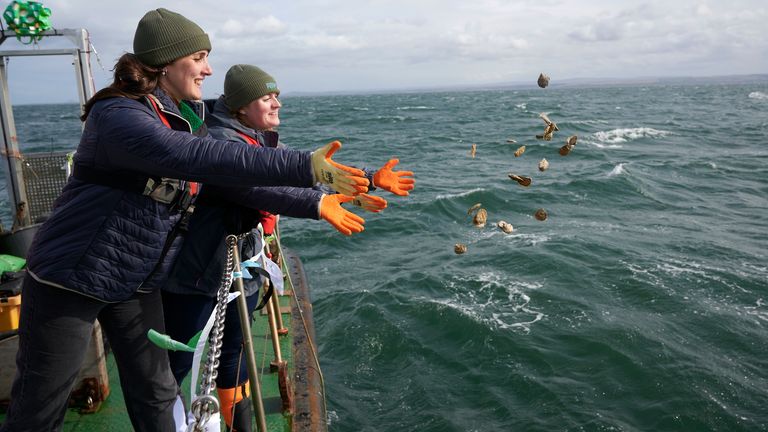Tens of thousands of oysters released into the Firth of Forth appear to be thriving again after a century-long absence from the Scottish estuary due to overfishing.
Marine experts are “delighted” with the positive progress of the Restoration Forth project, which has seen around 30,000 European flat oysters released since September last year.
Heriot-Watt University recently led monitoring sessions with divers and underwater camera equipment to check on their status at four restoration sites and has reported an 85% survival rate.
Bill Sanderson, professor of marine biodiversity at the Edinburgh-based university, said: “We are delighted that their high survival so far reflects the painstaking efforts we have made to support this initiative.”
Restoration Forth aims to create an oyster reef in the estuary, which in turn will provide a habitat for other species such as fish, crabs, sea snails and sponges.
Oysters also filter the water, improving its clarity. This means more light will be able to reach the seabed, allowing marine plant life such as seagrass to grow through photosynthesis.
Oysters disappeared from the area a century ago due to overfishing and industrial development.
Those reintroduced to the Forth were sourced from Little Loch Broom, near Ullapool in the Highlands.
Partners delivering the project include WWF, Edinburgh Shoreline, Fife Coast and Countryside Trust, Heriot-Watt University, Marine Conservation Society, Project Seagrass, Royal Botanic Garden Edinburgh, Scottish Seabird Centre, The Ecology Centre, and The Heart of Newhaven Community.
Naomi Kennon, a Heriot-Watt research associate for Restoration Forth, said: “We have worked with hundreds of people from around the Forth to clean and move oysters to their new home.
“Working with the volunteers, over the next year we hope to see these oysters continue to thrive and to start to enhance the biodiversity on the seabed.
“Our project will not only bring back a native species lost to overfishing in the 1800s, but also the ecosystem services those animals bring with them.
“Oysters enhance water quality through filter feeding, store carbon and enhance biodiversity by creating a complex habitat providing homes and shelter for countless other organisms.”



























